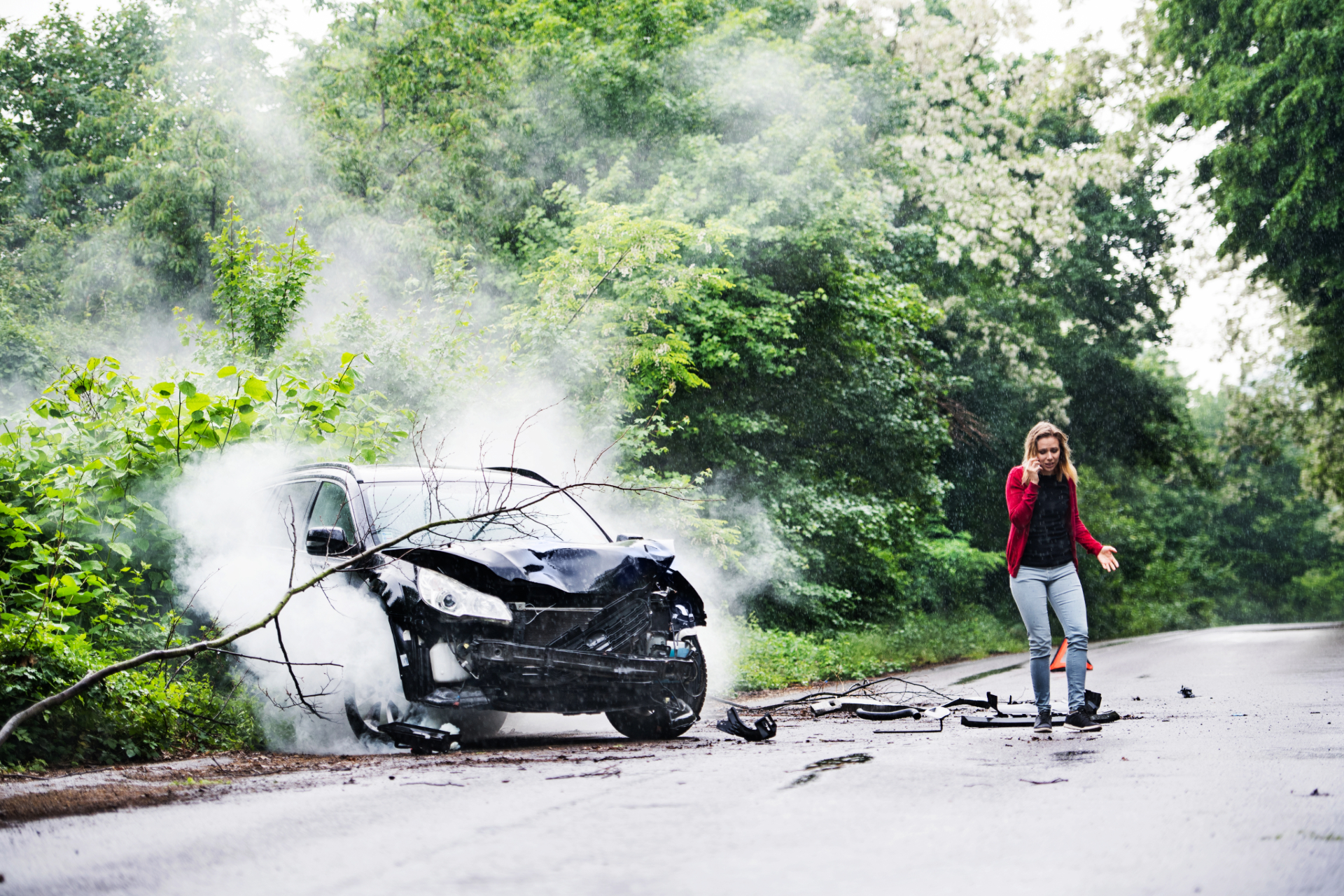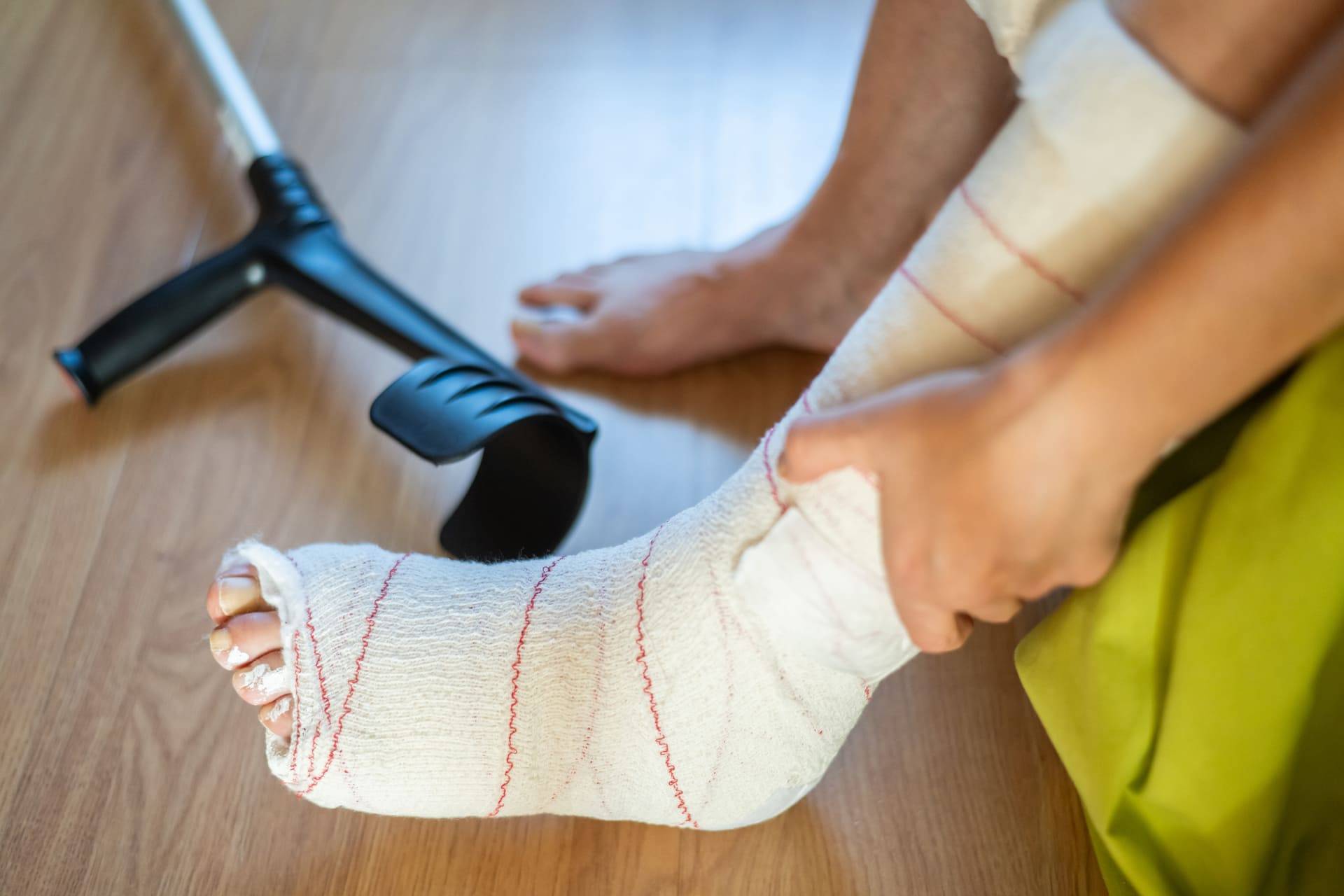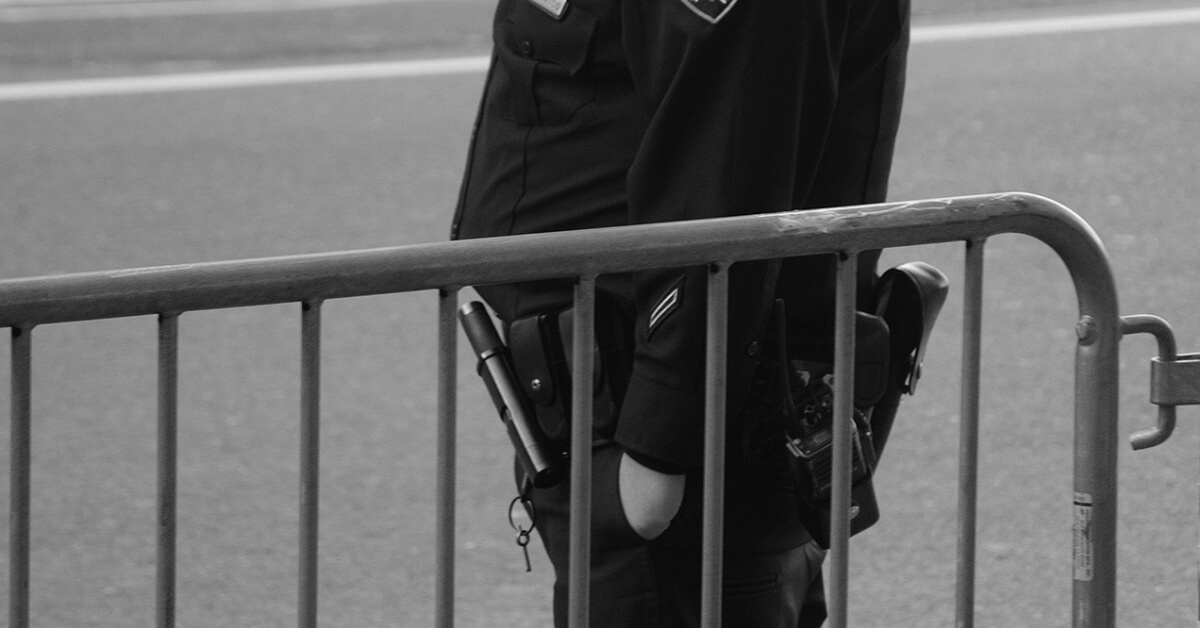Fleeing the Scene of an Accident in California: Complete Guide

Fleeing the scene of an accident in California is not just a legal violation but a breach of ethical responsibility. It involves leaving without stopping to exchange information or provide aid, which is mandatory under California state law.
Such conduct can result in severe legal consequences.
This can include felony charges for serious injuries or fatalities, substantial fines, and potential imprisonment.
What is considered fleeing the scene of an accident?
In California, fleeing the scene of an accident, commonly known as a hit-and-run accident, means leaving the site of a collision without stopping to provide your information to the other parties involved or to law enforcement.
Various scenarios constitute fleeing the scene:
- Hitting a parked car and driving away without leaving your contact information.
- Leaving an accident where there are injuries without offering help or waiting for law enforcement.
- Colliding with public or private property (like a street sign, guardrail, fence, or mailbox) and not reporting the incident.
- Being involved in a multi-vehicle collision and not providing your information to all involved parties or law enforcement.
- Hitting a pedestrian or cyclist and driving away without checking on their condition and providing your information.
All these situations are treated as serious offenses in California, with significant penalties that can include fines, imprisonment, and suspension of your driver’s license.
If you believe you’re the victim of a hit-and-run incident in California, contact our San Bernardino car accident lawyers for expert legal advice
What California law says about fleeing an accident
In California, hit-and-run incidents are governed by specific sections of the California Vehicle Code (CVC). The two primary sections related to hit-and-run incidents are Vehicle Code 20001 and Vehicle Code 20002.
Vehicle Code 20001 (CVC 20001)
This code addresses hit-and-run incidents that result in injury or death. The key points of CVC 20001 are as follows:
- Obligation to Stop: Drivers involved in an accident that results in injury must immediately stop at the scene of the accident.
- Exchange Information: Drivers are required to provide their name, address, and vehicle registration number to the other party involved. If requested, they must also show their driver’s license.
- Provide Aid: Drivers must render reasonable assistance to any injured persons. This includes transporting or arranging transportation to a medical facility if it is apparent that treatment is needed or if the injured person requests it.
- Reporting to Authorities: In cases where the accident results in death or serious injury, the driver must report the accident to the California Highway Patrol or the local police department.
Failure to comply with these requirements can result in severe penalties, including imprisonment, fines, and suspension of driving privileges.
Vehicle Code 20002 (CVC 20002)
CVC 20002 pertains to hit-and-run incidents that involve property damage only, with the key points being:
- Obligation to Stop: Drivers involved in an accident that causes damage to any property, including vehicles, must immediately stop at the nearest location that does not impede traffic or jeopardize the safety of others.
- Exchange Information: Drivers must provide their name, address, and vehicle registration number to the owner or person in charge of the damaged property. If the property owner is not present, the driver must leave a written notice with this information in a conspicuous place on the damaged property and notify the police or the California Highway Patrol.
- Reporting to Authorities: If the accident results in property damage exceeding $1,000, it must be reported to the Department of Motor Vehicles (DMV) within 10 days.
Failure to comply with these requirements can result in misdemeanor charges, fines, and potential imprisonment.
General legal requirements for drivers involved in an accident
Regardless of the severity of the accident, California law mandates the following actions for drivers:
- Stop Immediately: Always stop at the scene of the accident. Failure to stop can lead to criminal charges.
- Exchange Information: Share your name, address, and vehicle registration number with the other party involved. Show your driver’s license upon request.
- Provide Aid: Offer reasonable assistance to any injured persons. This may include calling emergency services or arranging for transportation to a medical facility.
- Report the Accident: For accidents involving injury, death, or significant property damage, report the incident to the appropriate authorities and the DMV as required.
Complying with these legal requirements ensures that drivers fulfill their responsibilities and avoid severe legal consequences.
Legal and personal ramifications of fleeing an accident scene

Legally, a hit-and-run constitutes a serious offense under state law, punishable by substantial penalties. These include criminal charges like fines ranging from hundreds to thousands of dollars, potential imprisonment for up to several years, and the revocation of driving privileges, especially in cases involving injuries or fatalities.
From a personal perspective, fleeing an accident scene can have lasting repercussions. It often leads to increased insurance premiums due to the label of high-risk behavior.
Moreover, a hit-and-run offense tarnishes one’s reputation, affecting both personal and professional relationships. The guilt and shame associated with leaving the scene of an accident can also take a significant toll on the individual’s mental and emotional well-being.
Ethically, failing to stop and provide assistance violates fundamental principles of responsibility and compassion. It disregards the potential need for urgent medical aid to injured parties and undermines community trust.
Socially, individuals convicted of such an offense may face stigma and social alienation, impacting their standing within their communities.
A Torrance car accident lawyer from our firm can help you with your next steps after the negligent party has fled the scene.
Types of hit-and-run offenses
Hit-and-run offenses encompass a range of actions that involve leaving the scene of a crash without fulfilling legal obligations. These offenses vary from cases where only property damage is involved to incidents resulting in injury or even death.
Misdemeanor (property damage only)
Property damage in the context of a hit-and-run accident refers to any harm caused to vehicles, structures, or other personal property. This can include scenarios where a driver collides with a parked car, crashes into a fence, or damages someone’s mailbox and then leaves the scene without fulfilling their legal obligations.
Under California law, failing to stop and provide information after causing property damage is considered a misdemeanor offense. The penalties for misdemeanor hit-and-run involving only property damage may include:
- Fines: Up to $1,000.
- Imprisonment: Up to 6 months in county jail.
- Probation: Possible probation period.
- Restitution: Payment for the damage caused to the property.
- Record: A misdemeanor conviction.
Injury or death
Incidents that result in serious injuries or fatalities are among the most serious offenses under California law, carrying severe legal and ethical implications.
When an accident involves injury to another person and the driver fails to stop and provide assistance, it is typically charged as a felony hit-and-run. The related penalties may include:
- Fines: $1,000 to $10,000.
- Imprisonment: Up to 1 year in county jail or 2 to 4 years in state prison if the accident results in death or serious injury.
- Probation: Possible probation period with conditions
- Restitution: Payment for medical expenses, lost wages, and other damages to the victim
- Record: A felony conviction will appear on your criminal record and can have long-lasting effects on your personal and professional life.
- License Suspension: The DMV may suspend or revoke your license depending on the circumstances.
California hit-and-run statistics
Between 2012 and 2021, the number of fatal hit-and-run incidents in California saw a significant increase, rising from 1,469 in 2012 to 2,783 in 2021.
This represents an 89.4% increase over the decade. Nationally, there were a total of 19,522 fatal hit-and-run incidents recorded during this period in the United States.
Statute of limitations for hit-and-run cases in California
The California car accident statute of limitations for a hit-and-run is six years. This specifies the timeframe within which charges must be filed against a driver who has fled the scene of an accident.
This six-year window allows law enforcement and prosecutors ample time to gather evidence and build a case against the offending driver. If charges are not filed within this period, the driver cannot be prosecuted for the hit-and-run incident.
Understanding the legal timelines and processes, such as “how long does a car accident settlement take in California,” can provide insight into the complexities of resolving such incidents legally.
Legal defenses against hit-and-run charges
Facing hit-and-run charges in California can be scary, but there are several legal defenses that can potentially mitigate or dismiss these charges.
Lack of knowledge of the accident
One possible defense is demonstrating that they were unaware an accident had occurred. This defense can be effective if, for example, the accident was minor and occurred in an area with heavy traffic or distractions, making it plausible that the offender didn’t realize the collision had happened.
However, proving a lack of knowledge typically requires strong supporting evidence, such as witness testimony or forensic analysis.
Emergency situations
For instance, if the defendant was rushing a critically injured person to the hospital or seeking immediate help in a dangerous situation, this can potentially justify their actions. It’s essential to establish that their decision to leave was solely to address the emergency and not to avoid responsibility.
Mistaken identity
This could happen if there was confusion about vehicle descriptions, witnesses’ testimonies, or if someone else had access to the defendant’s vehicle at the time of the accident. Clear alibi evidence or contradictory witness statements can support this defense.
Steps to take if the negligent party fled the scene of an accident
- Stay Calm and Assess the Situation: Immediately after realizing they fled the scene, stay calm and assess the situation objectively. Ensure your safety and that of others around you.
- Consult with a Lawyer: Seek legal advice promptly. A personal injury lawyer from our firm can provide guidance on how to proceed. Discuss the details of the accident and any concerns you may have about potential legal consequences.
- Collect and Document Information: Gather all relevant information about the accident, including the location, time, and any details you remember. If possible, document the damage caused and any injuries that may have occurred.
- Cooperate with Law Enforcement: Report the incident to the authorities and cooperate fully with law enforcement officers. Provide a truthful account of what happened and adhere to any legal procedures or requirements.
- Prepare for Legal Proceedings: Be prepared for legal proceedings, including court appearances and potential negotiations. Work closely with your lawyer to build a strong claim. Understanding how much can someone sue for in a car accident in California can help you gauge potential financial impacts.
- Follow Legal Counsel’s Advice: Throughout the process, continue to follow the advice and instructions of your attorney. Stay informed about developments in your case and be prepared to comply with court orders or agreements.
Involved in a hit-and-run in CA? Get in touch today!
If you find yourself involved in a hit-and-run accident in California, leaving the scene not only violates the law but also jeopardizes insurance coverage and can lead to severe penalties, including felony charges for injury or death cases.
At Feher Law, we emphasize the importance of taking responsibility, cooperating with authorities, and seeking legal guidance promptly.
Contact us today to schedule a free consultation to discuss your case and protect your rights if you’re the victim of a hit-and-run incident.

FAQs
Can you leave the scene of an accident if you didn’t cause it?
No, under California law, all parties, regardless of whether they caused the accident or not, must stop immediately at the scene. They must exchange contact information, driver's license details, and insurance information with other involved parties. If necessary, they must provide reasonable assistance to anyone injured in the accident.
Will insurance pay if you leave the scene of an accident?
Insurance coverage is contingent upon fulfilling legal obligations. Leaving the scene of an accident violates the terms of most insurance policies, which typically require drivers to report accidents promptly and cooperate with authorities. Fleeing the scene can lead to insurance claims being denied, leaving the driver personally liable for damages.
How can you get caught if you flee the scene of an accident?
Law enforcement agencies have various methods to identify and apprehend individuals who flee the scene of an accident. These methods include collecting witness statements, reviewing surveillance footage from nearby cameras, tracing the vehicle license place or registration records, and analyzing forensic evidence left at the scene. Prompt reporting of accidents and information is key.
Is fleeing the scene considered a felony?
Yes, fleeing the scene of an accident can result in felony charges in the state of California, especially if the accident involves injury or death to another person. Felony hit-and-run charges carry severe legal consequences, including substantial fines, lengthy imprisonment, and the potential loss of driving privileges.
Related Posts


Facial Scarring Compensation Calculator in California

How Are Slip and Fall Settlements Calculated in California

Fatal Hit-and-Run in Santa Clarita Crash

19-Year-Old Severely Injured in Panorama City Crash



